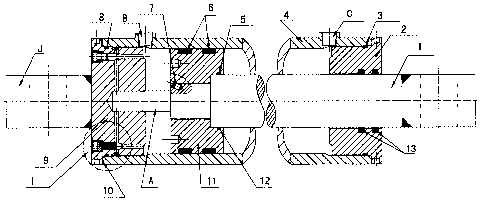Some of the information on this Web page has been provided by external sources. The Government of Canada is not responsible for the accuracy, reliability or currency of the information supplied by external sources. Users wishing to rely upon this information should consult directly with the source of the information. Content provided by external sources is not subject to official languages, privacy and accessibility requirements.
Any discrepancies in the text and image of the Claims and Abstract are due to differing posting times. Text of the Claims and Abstract are posted:
| (12) Patent Application: | (11) CA 2557756 |
|---|---|
| (54) English Title: | HYDRAULIC CYLINDER |
| (54) French Title: | VERIN HYDRAULIQUE |
| Status: | Deemed Abandoned and Beyond the Period of Reinstatement - Pending Response to Notice of Disregarded Communication |
| (51) International Patent Classification (IPC): |
|
|---|---|
| (72) Inventors : |
|
| (73) Owners : |
|
| (71) Applicants : |
|
| (74) Agent: | |
| (74) Associate agent: | |
| (45) Issued: | |
| (22) Filed Date: | 2006-08-16 |
| (41) Open to Public Inspection: | 2008-02-16 |
| Availability of licence: | N/A |
| Dedicated to the Public: | N/A |
| (25) Language of filing: | English |
| Patent Cooperation Treaty (PCT): | No |
|---|
| (30) Application Priority Data: | None |
|---|
A hydraulic cylinder comprises a piston, which is movable inside a tube
between an end cup and a head gland
in the direction of the cylinder axis. The head gland is provided with an
opening for a piston rod, and a clevis is
attached to the end cup. Each tube end is provided with the internal screw
thread, which is adapted for cooperation
with the external screw thread at each of the end cup and the head gland. A
spacer can be added to rearrange the
rotational position of the clevis with respect to the oil ports. The end cup
can be provided with an optional
cushion unit, and metering passages can be built in this end cup.
Note: Claims are shown in the official language in which they were submitted.
Note: Descriptions are shown in the official language in which they were submitted.

2024-08-01:As part of the Next Generation Patents (NGP) transition, the Canadian Patents Database (CPD) now contains a more detailed Event History, which replicates the Event Log of our new back-office solution.
Please note that "Inactive:" events refers to events no longer in use in our new back-office solution.
For a clearer understanding of the status of the application/patent presented on this page, the site Disclaimer , as well as the definitions for Patent , Event History , Maintenance Fee and Payment History should be consulted.
| Description | Date |
|---|---|
| Application Not Reinstated by Deadline | 2010-08-16 |
| Time Limit for Reversal Expired | 2010-08-16 |
| Inactive: Adhoc Request Documented | 2010-07-22 |
| Inactive: Adhoc Request Documented | 2010-05-19 |
| Deemed Abandoned - Failure to Respond to Maintenance Fee Notice | 2009-08-17 |
| Application Published (Open to Public Inspection) | 2008-02-16 |
| Inactive: Cover page published | 2008-02-15 |
| Inactive: First IPC assigned | 2007-01-10 |
| Inactive: IPC assigned | 2007-01-10 |
| Inactive: IPC assigned | 2007-01-10 |
| Inactive: Office letter | 2006-10-03 |
| Filing Requirements Determined Compliant | 2006-09-26 |
| Inactive: Filing certificate - No RFE (English) | 2006-09-26 |
| Application Received - Regular National | 2006-09-26 |
| Small Entity Declaration Determined Compliant | 2006-08-16 |
| Abandonment Date | Reason | Reinstatement Date |
|---|---|---|
| 2009-08-17 |
The last payment was received on 2008-08-15
Note : If the full payment has not been received on or before the date indicated, a further fee may be required which may be one of the following
Please refer to the CIPO Patent Fees web page to see all current fee amounts.
| Fee Type | Anniversary Year | Due Date | Paid Date |
|---|---|---|---|
| Application fee - small | 2006-08-16 | ||
| MF (application, 2nd anniv.) - small | 02 | 2008-08-18 | 2008-08-15 |
Note: Records showing the ownership history in alphabetical order.
| Current Owners on Record |
|---|
| MINGZE WANG |
| Past Owners on Record |
|---|
| None |